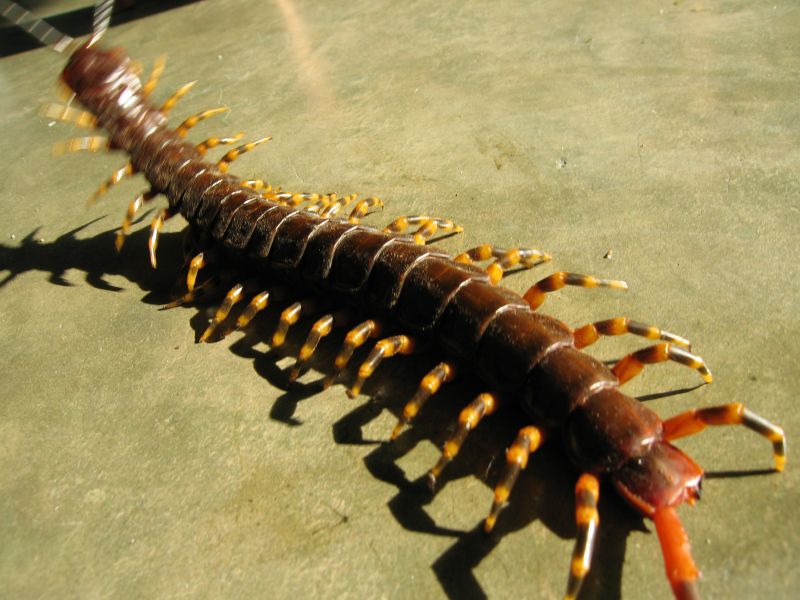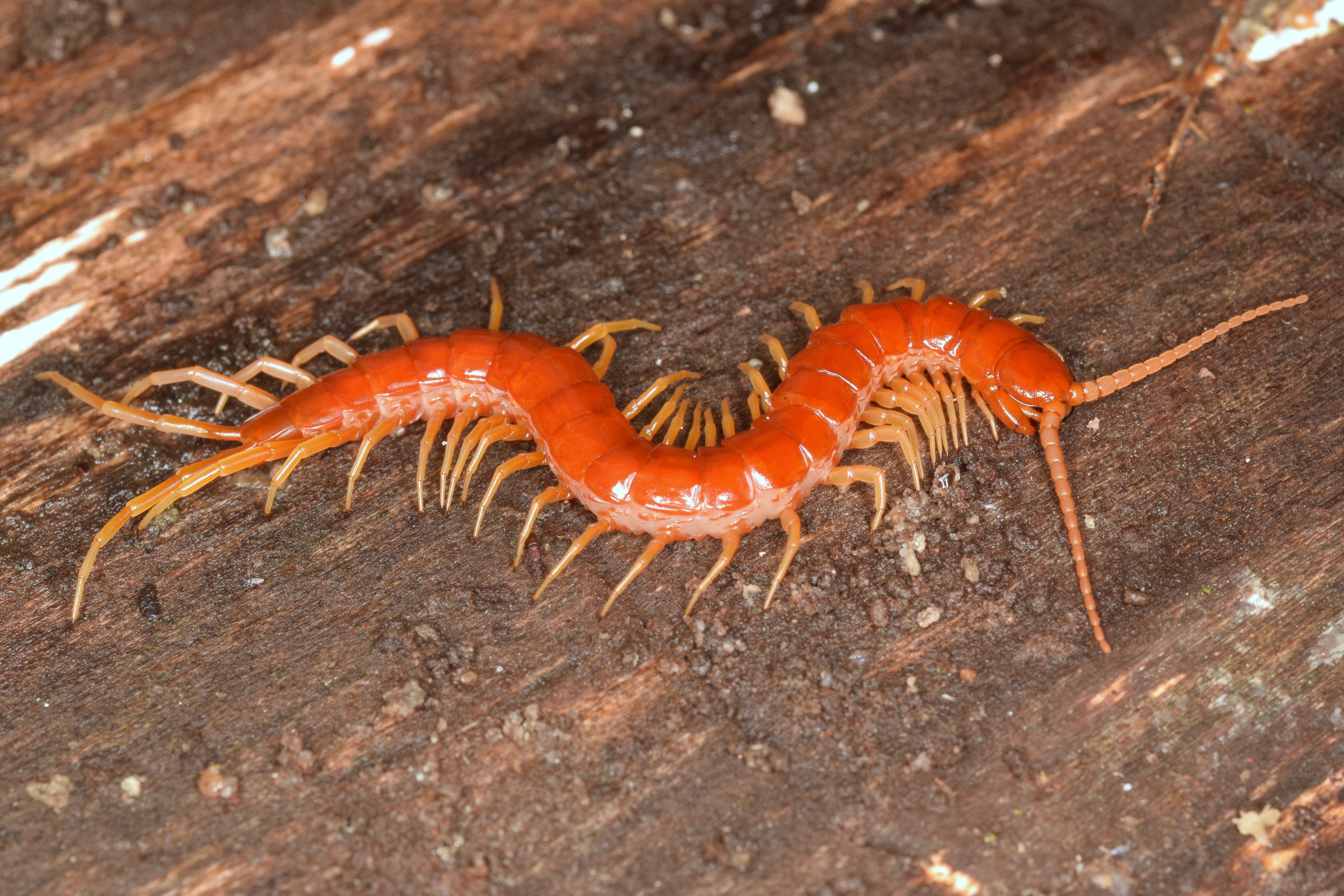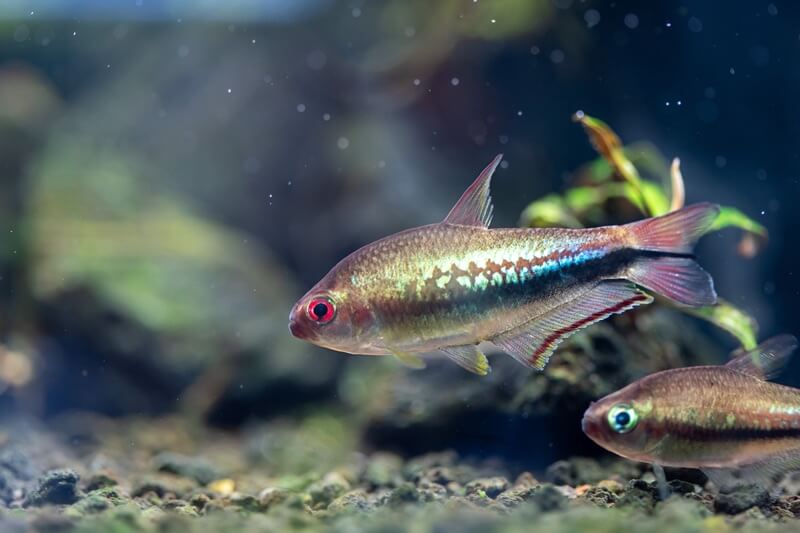Centipedes are fascinating creatures that have been around for millions of years. They are carnivorous animals that use their many legs to move quickly and catch their prey. There are approximately 8,000 species of centipedes in the world, and they can be found in many different habitats, including forests, deserts, caves, and mountainous regions.
In this article, we will explore 8 of the most fascinating centipede species and learn interesting facts about each one. From the largest centipede in the world to the smallest, these species have unique characteristics that make them stand out.
You are reading: 8 Of The Most Fascinating Centipede Species
Let’s dive into the world of centipedes and discover what makes them so fascinating.

8 Of The Most Fascinating Centipede Species
Feather Tail Centipede (Alipes grandidieri)

Alipes grandidieri, also known as the feather-tail centipede, is a species of centipede that is found in Eastern Africa, specifically in Kenya, Tanzania, and Uganda. It was first described by Hippolyte Lucas in 1864.
This species is part of the genus Alipes and the family Scolopendridae. The feather-tail centipede has a distinctive appearance, with elongated ultimate legs that have laterally-flattened pads on the distal portions, resembling feathers.
When threatened, they will shake these legs and make a hissing sound. The body of the feather-tail centipede is 10-15 cm long.
House Centipede (Scutigera coleoptrata)
Scutigera coleoptrata, commonly known as the house centipede, is a species of centipede that is typically yellowish-grey and has up to 15 pairs of long legs. It is an insectivore and feeds on other arthropods, such as insects and arachnids.
House centipedes are native to the Mediterranean region but have spread to other parts of the world, where they can live in human homes. They are fast runners and can be unsettling to some people due to their speed and appearance, but they are not routinely dangerous to humans.
House centipedes are not aggressive and usually flee when disturbed or revealed from cover. Sting attempts are rare unless the centipede is cornered or aggressively handled. House centipedes have been observed to groom their legs by curling around and grooming them with their forcipules.
Amazonian Giant Centipede (Scolopendra gigantea)

Read more : A Look At 4 Types Of Shark Teeth And Their Unique Features
Scolopendra gigantea, also known as the Peruvian giant yellow-leg centipede or Amazonian giant centipede, is the largest centipede species in the world, growing over 30 centimeters (12 inches) long. It has a distinctive yellowish-brown color and can have 21 or 23 segments.
This species is found in various places throughout South America and the extreme south Caribbean, where it preys on a wide variety of animals, including other sizable arthropods, amphibians, mammals, and reptiles.
Scolopendra gigantea is a voracious carnivore that feeds on small invertebrates such as crickets, worms, snails, and roaches, and can also eat lizards, toads, and mice. They are threatened by the spraying of pesticides. The poison emitted by the bite of Scolopendra gigantea is strong enough to seriously wound a human.
Giant Red-Headed Centipede (Scolopendra heros)
Scolopendra heros, commonly known as the giant red-headed centipede, is a species of North American centipede found in the Southwestern United States and Northern Mexico. It is also known as the Arizona desert centipede, giant desert centipede, giant Sonoran centipede, Texas black-tailed centipede, and Texas red-headed centipede.
This species can grow up to 20 centimeters (8 inches) long and has a distinctive red head and black body. Scolopendra heros is primarily a nocturnal predator and feeds on invertebrates and small vertebrates, including rodents, reptiles, and amphibians. It is capable of reaching into the air to grab small flying insects.
The centipede uses its venom to subdue prey. Scolopendra heros hatch from eggs and molt away their exoskeleton as they grow and mature. Each time they molt, they enter a new stage of their life cycle called an instar.
Like all Scolopendromorph centipedes, the number of segments they possess remains the same throughout their life. The venom of Scolopendra heros is similar in composition to the venom of other Scolopendra species, including components such as serotonin, histamine, lipids, and proteins.
Hoffman’s Dwarf Centipede (Nannarrup hofmani)
Nannarrup hoffmani, commonly known as Hoffman’s dwarf centipede, is a species of soil centipede that belongs to the family Mecistocephalidae. It is the only species in the genus Nannarrup. This species is native to the eastern United States and is found in New York City.
Hoffman’s dwarf centipede is the smallest centipede species in the world, measuring only 10.3 mm (0.4 in) in length and having 41 pairs of legs. It is a herbivore and feeds on plants. The genus Nannarrup was established for this species in 2003.
Eastern Red Centipede (Scolopocryptops sexspinosus)

Scolopocryptops sexspinosus, also known as the eastern red centipede, is a species of centipede that belongs to the family Scolopocryptopidae. Here are some interesting facts about this species:
– The eastern red centipede is found in North America.
– It is a carnivorous species that is known for its distinct trapping behavior. It ambushes its prey using its venomous front legs.
– The eastern red centipede is commonly found in the eastern United States and can be found under leaf litter and other debris.
– This species can grow up to 4 inches long.
– The eastern red centipede has a bright red or orange body with lighter orange legs.
– The venom of the eastern red centipede is not considered dangerous to humans, but it can cause pain and swelling.
Overall, the eastern red centipede is a fascinating species that plays an important role in its ecosystem as a predator of other arthropods.
Tiger Centipede (Scolopendra polymorpha)
Read more : The Worlds Top 10 Animals That Mate For Life
Scolopendra polymorpha, also known as the common desert centipede, tiger centipede, banded desert centipede, or Sonoran Desert centipede, is a species of centipede found in western North America and the Hawaiian Islands. Here are some interesting facts about this species:
– Scolopendra polymorpha can grow up to 4-7 inches (10-18 cm) in length.
– The body segments of this species have one dark lateral stripe, which is why they are also known as the tiger centipede or tiger-striped centipede.
– The coloration of Scolopendra polymorpha is variable, hence the species name polymorpha which means “many forms”.
– This species has a darker brown, red, or orange-colored head and lighter brown, tan, or orange body segments with yellow legs.
– Scolopendra polymorpha is indigenous to the deserts of western North America, including Texas, New Mexico, and Arizona in the United States, and Sonora and Chihuahua in northern Mexico.
– They primarily seek shelter during the day in moist, cool areas such as under desert rocks.
– Scolopendra polymorpha is a carnivorous species that preys on other arthropods, including insects and spiders.
– The venom of Scolopendra polymorpha is not considered dangerous to humans, but it can cause pain and swelling.
Overall, the tiger centipede is a fascinating species that plays an important role in its ecosystem as a predator of other arthropods.
Diamondback Soil Centipede (Geophilus vittatus)
Geophilus vittatus, also known as the diamondback soil centipede, is a species of soil centipede in the family Geophilidae. Here are some interesting facts about this species:
– Geophilus vittatus is widespread in North America and is named for the dark band of diamond-shaped markings across its back.
– This species can grow up to 52 millimeters in length, though it averages 25-40 millimeters.
– Geophilus vittatus ranges from brown to orange-yellow in color.
– Females have 49-53 leg pairs, while males have 49-51 leg pairs.
– Geophilus vittatus lacks consolidated carpophagus structures.
– When threatened, Geophilus vittatus will secrete poisons from its underside. The secretion is proteinaceous and contains two cyanogenetic compounds, mandelonitrile and benzoyl cyanide, as well as two products derived from these compounds as a result of hydrogen cyanide production (benzaldehyde and benzoic acid).
– Benzoyl cyanide has not been previously recorded from a natural source.
Overall, the diamondback soil centipede is a fascinating species that plays an important role in its ecosystem as a predator of other arthropods.
FAQS
1. What is the largest centipede species in the world?
The Amazonian giant centipede (Scolopendra gigantea) is the largest centipede species in the world, growing over 30 centimeters (12 inches) long.
2. Are centipedes dangerous to humans?
While some centipedes have venomous bites that can cause pain and swelling, most centipedes are not dangerous to humans.
3. What do centipedes eat?
Centipedes are carnivorous and feed on other arthropods, such as insects and arachnids. Larger species can also eat small vertebrates, such as rodents, reptiles, and amphibians.
4. Where do centipedes live?
Centipedes can be found in many different habitats, including forests, deserts, caves, and mountainous regions. Some species can even live in human homes.
5. How many legs do centipedes have?
Despite their name, centipedes do not have 100 legs. The number of legs varies depending on the species, ranging from 15 to 177 pairs of legs.
6. What is the smallest centipede species in the world?
Hoffman’s dwarf centipede (Nannarrup hoffmani) is the smallest centipede species in the world, measuring only 10.3 mm (0.4 in) in length and having 41 pairs of legs.
7. Are centipedes beneficial to the environment?
Yes, centipedes play an important role in their ecosystem as predators of other arthropods. They can help control pest populations and maintain a healthy balance in their environment.
8. Can centipedes be kept as pets?
Yes, some species of centipedes can be kept as pets, but they require specific care and should only be kept by experienced owners.
Source: https://petstutorial.com
Category: Animals










